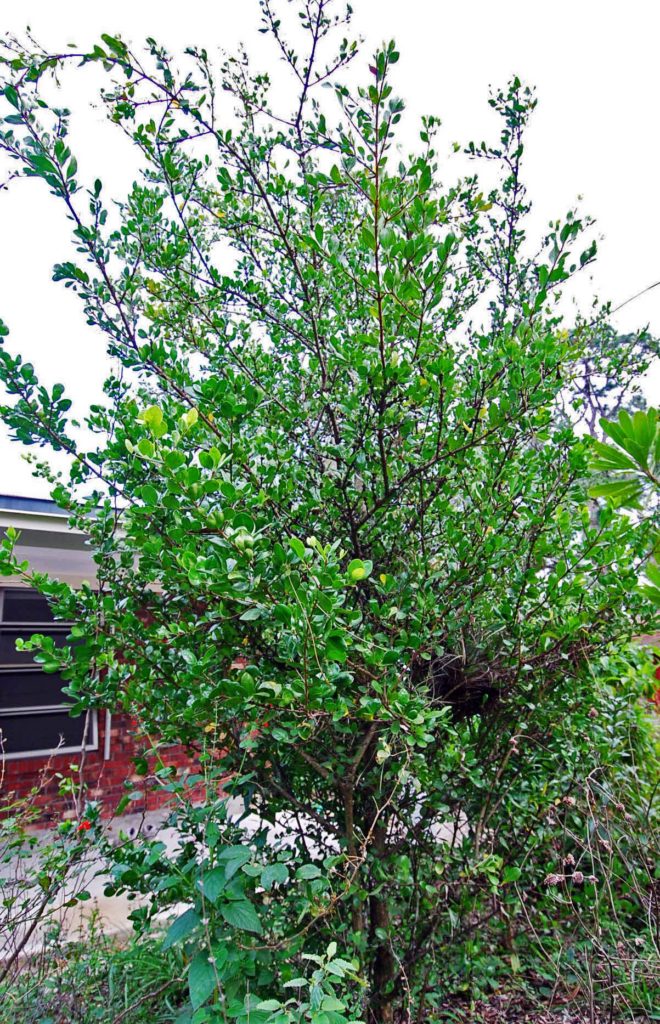
Indigo Berry
Randia aculeata
Indigo Berry is one of the toughest native plants available. This is found from the Florida Keys to Brevard County and withstands salt air, drought, and freezing temperatures. It likes soil with some organic matter and will not do well in white, sterile sandy soil. Not many plants do.
Indigo Berry can be grown as an eight foot specimen shrub or clipped as a two foot hedge. The shiny leaves are dark green and tough. Male and female plants are separate, yet both produce fragrant, small white flowers. The female plants produce half inch oval white berries with a brittle skin that contains an inky pulp with several flat seeds. Not tasty although a few can be eaten with no harm.
Birds eat the fruit and like to nest in the thick spiny branches. It is a larval food for the tantalus sphinx moth. There seems to be a varietal difference between the taller coastal plant and the shorter, compact one found in the pine rocklands.
Randia mixes well with coastal shrubs for a mixed hedge. The short form can be used to create a Keys theme. For this, try mixing with Coontie, Thrinax Palms, Ernodea, Slash Pines, Tetrazygia, Marlberry, Quailberry and Chapman’s Cassia. The small thorns make both forms a good security hedge that is uncomfortable to walk through.
The taller coastal form from north of the pine rocklands goes well with Beach Cocoplum, Sea Lavender, Wild Coffee, Cacti, Sea Oats, Beach Elder, Marlberry, Black Bead, myrsine, Native Scaevola, Beach Sunflower, Beach Verbena, Gaillardia and most other coastal plants. A mass of several Indigo Berry is very attractive.